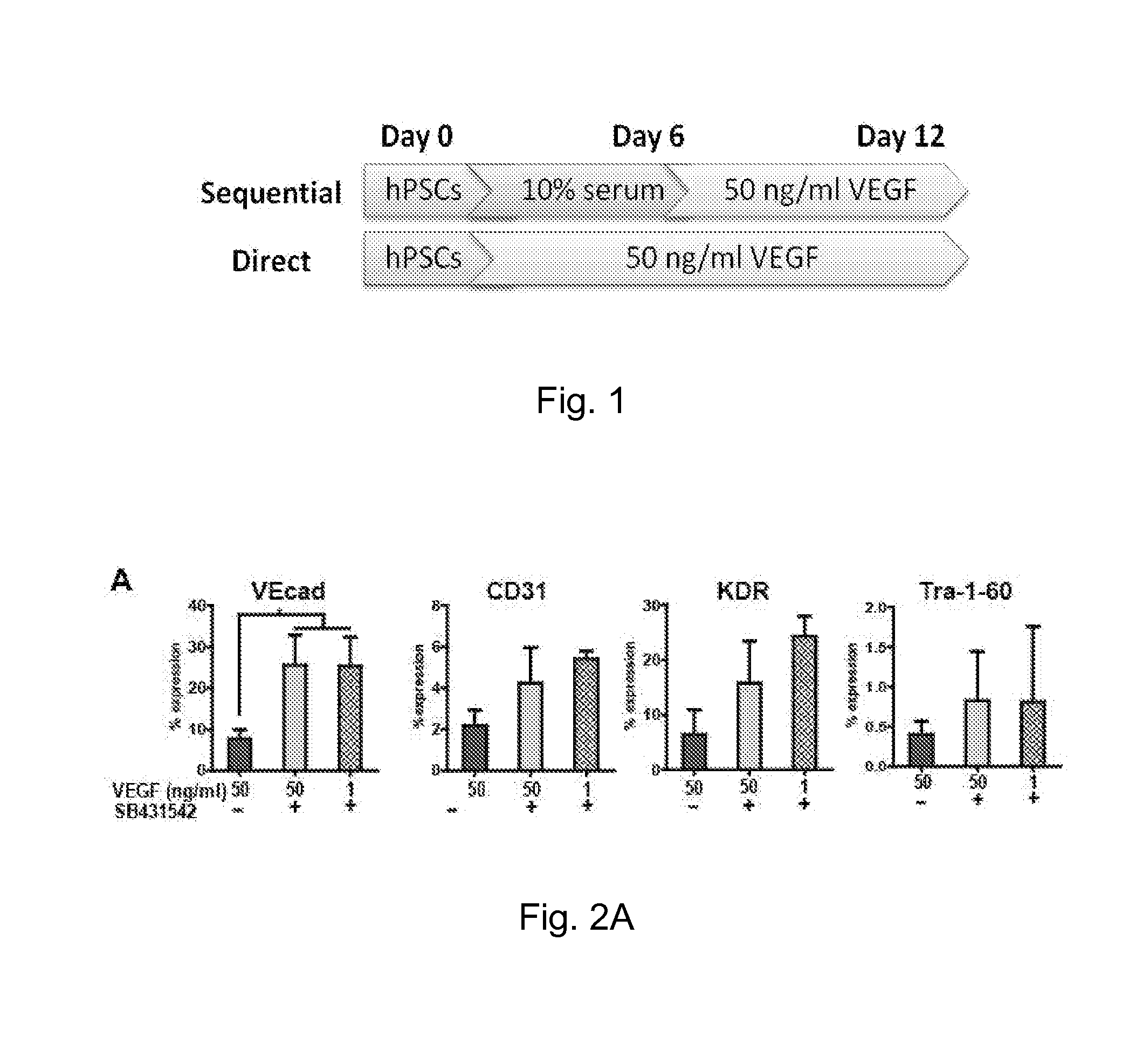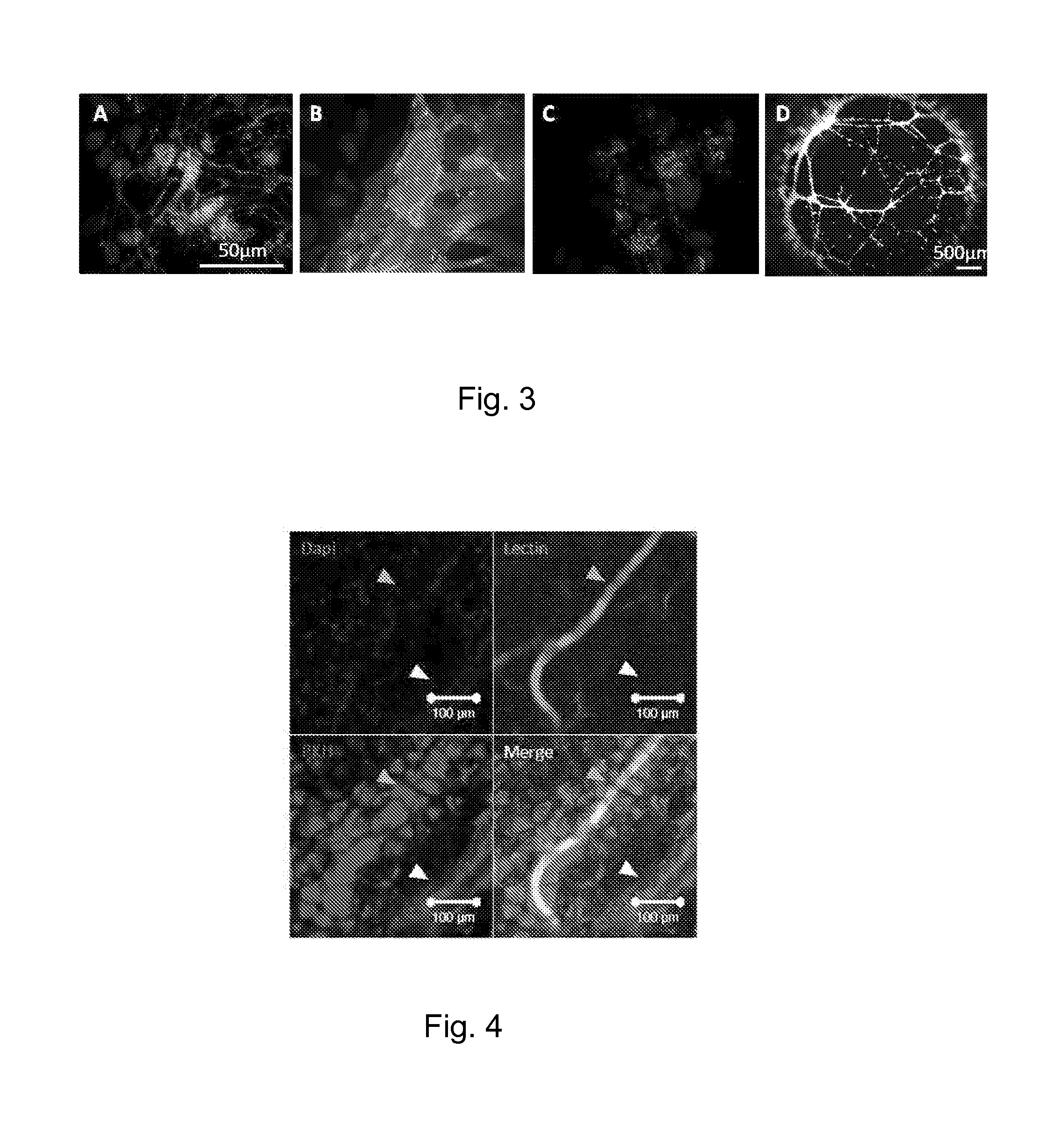Method for guiding the derivation of endothelial cells from human pluripotent stem cells employing two-dimensional, feeder-free differentiation
a technology of human pluripotent stem cells and differentiation methods, applied in the field of pluripotent stem cells, can solve the problems of supporting a thin layer of viable tissue, major challenge in the vascularization of tissue constructs,
- Summary
- Abstract
- Description
- Claims
- Application Information
AI Technical Summary
Benefits of technology
Problems solved by technology
Method used
Image
Examples
Embodiment Construction
[0014]The following description is provided to enable any person skilled in the art to make and use the invention and sets forth the best modes contemplated by the inventor of carrying out his invention. Various modifications, however, will remain readily apparent to those skilled in the art, since the general principles of the present invention have been defined herein specifically to provide a method for causing pluripotent stem cells to differentiate into effective ECs.
[0015]The present inventors describe a step-wise protocol for differentiating mammalian, including human, pluripotent stem cells (PSCs) into ECs in vitro. The PSCs can be derived from any suitable source. For example, they can be embryonic stem cells (ESCs) or induced pluripotent stem cells (abbreviated iPS cells or iPSCs). The method, which is simple, efficient and reliable, allows for the efficient derivation of concentrated, purified, ECs. The derived ECs highly express specific endothelial cell markers. In the ...
PUM
| Property | Measurement | Unit |
|---|---|---|
| od | aaaaa | aaaaa |
| homogenous | aaaaa | aaaaa |
| chemical compositions | aaaaa | aaaaa |
Abstract
Description
Claims
Application Information
 Login to View More
Login to View More - R&D
- Intellectual Property
- Life Sciences
- Materials
- Tech Scout
- Unparalleled Data Quality
- Higher Quality Content
- 60% Fewer Hallucinations
Browse by: Latest US Patents, China's latest patents, Technical Efficacy Thesaurus, Application Domain, Technology Topic, Popular Technical Reports.
© 2025 PatSnap. All rights reserved.Legal|Privacy policy|Modern Slavery Act Transparency Statement|Sitemap|About US| Contact US: help@patsnap.com



